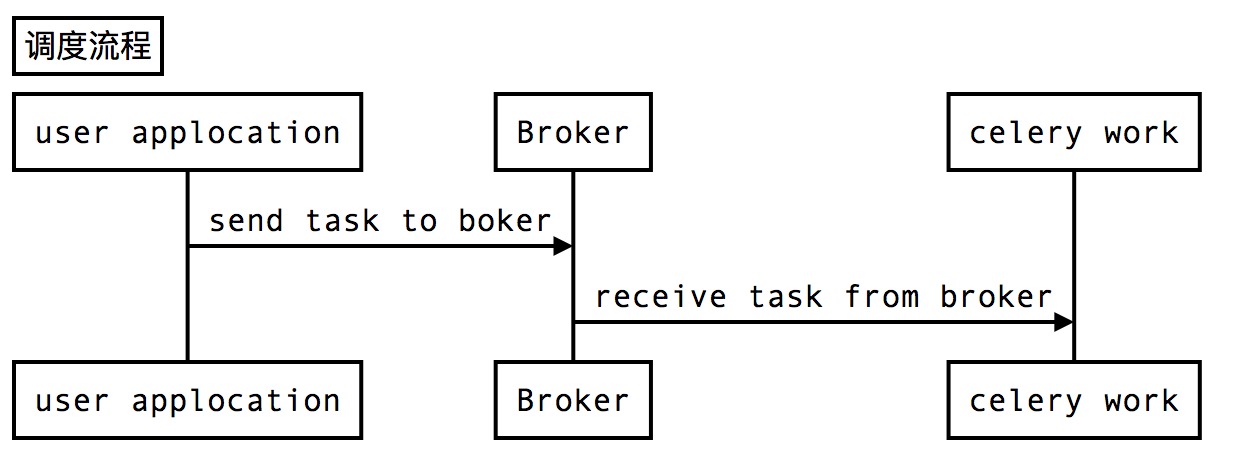Python常用第三方库整理
回廊识路 2/22/2019 Python
本科实习期间写过一段时间python,这里整理了一些常用的第三方库。
# Celery
- 基于python开发的分布式异步消息任务队列

# Quick Start
from celery import Celery
# 配置backend和broker
app = Celery(
'tasks',
backend='redis://localhost:6379/0',
broker='redis://localhost:6379/0'
)
@app.task
def add(x, y):
return x + y
1
2
3
4
5
6
7
8
9
10
11
12
2
3
4
5
6
7
8
9
10
11
12
celery -A tasks worker --loglevel=info
1
>>> from tasks import add
>>> add.delay(6,6)
<AsyncResult: 8de16f41-3c6c-43e7-9c96-e5273f559aa8>
1
2
3
2
3
# Json
| 方法 | 功能 |
|---|---|
| json.dumps() | 将dict类型的数据转成str |
| json.loads() | 将str类型的数据转成dict |
| json.dump() | 将dict类型的数据转成str,并写入到json文件中 |
| json.load() | 从json文件中读取数据 |
# Logging
# 提供接口
- logger:提供日志接口,供应用代码使用。logger最常用的操作有两类:配置和发送日志消息。可以通过logging.getLogger(name)获取logger对象,如果不指定name则返回root对象,多次使用相同的name调用getLogger方法返回同一个logger对象。
- handler:将日志记录(log record)发送到合适的目的地(destination),比如文件、socket等。一个logger对象可以通过addHandler方法添加0到多个handler,每个handler又可以定义不同日志级别,以实现日志分级过滤显示。
- filter:提供一种优雅的方式决定一个日志记录是否发送到handler。
- formatter:指定日志记录输出的具体格式。formatter的构造方法需要两个参数:消息的格式字符串和日期字符串,这两个参数都是可选的。
# 用法解析
- 初始化
logger = logging.getLogger("endlesscode"),getLogger()方法后面最好加上所要日志记录的模块名字,后面的日志格式中的%(name)s 对应的是这里的模块名字。 - 设置级别
logger.setLevel(logging.DEBUG),Logging中有NOTSET < DEBUG < INFO < WARNING < ERROR < CRITICAL这几种级别,日志会记录设置级别以上的日志。 - Handler,常用的是StreamHandler和FileHandler,windows下可以简单理解为一个是console和文件日志,一个打印在CMD窗口上,一个记录在一个文件上。
- formatter,定义了最终log信息的顺序,结构和内容,如:
'[%(asctime)s] [%(levelname)s] %(message)s', '%Y-%m-%d %H:%M:%S'。 - 使用object.debug(message)来记录日志。
# Demo
import logging
class Logger:
def __init__(self, path, clevel=logging.ERROR, flevel=logging.DEBUG):
self.logger = logging.getLogger(path)
self.logger.setLevel(logging.DEBUG)
fmt = logging.Formatter('[%(asctime)s] [%(levelname)s] %(message)s', '%Y-%m-%d %H:%M:%S')
# 设置CMD日志
ch = logging.StreamHandler()
ch.setFormatter(fmt)
ch.setLevel(clevel)
# 设置文件日志
fh = logging.FileHandler(path)
fh.setFormatter(fmt)
fh.setLevel(flevel)
# handler添加到logger
self.logger.addHandler(ch)
self.logger.addHandler(fh)
def debug(self, message):
self.logger.debug(message)
def info(self, message):
self.logger.info(message)
def war(self, message):
self.logger.warn(message)
def error(self, message):
self.logger.error(message)
def cri(self, message):
self.logger.critical(message)
LOG_FILE = '/path/to/file.log'
logger_info = Logger(LOG_FILE, logging.ERROR, logging.DEBUG)
if __name__ == '__main__':
logger_info.debug('一个debug信息')
logger_info.info('一个info信息')
logger_info.war('一个warning信息')
logger_info.error('一个error信息')
logger_info.cri('一个致命critical信息')
1
2
3
4
5
6
7
8
9
10
11
12
13
14
15
16
17
18
19
20
21
22
23
24
25
26
27
28
29
30
31
32
33
34
35
36
37
38
39
40
41
42
43
2
3
4
5
6
7
8
9
10
11
12
13
14
15
16
17
18
19
20
21
22
23
24
25
26
27
28
29
30
31
32
33
34
35
36
37
38
39
40
41
42
43
# Netmiko
# Quick Start
from netmiko import ConnectHandler
cisco_881 = {
'device_type': 'cisco_ios',
'ip': '10.10.10.227',
'username': 'username',
'password': 'password',
}
# 创建connect对象
>>> net_connect = ConnectHandler(**cisco_881)
SSH connection established to 10.10.10.227:22
Interactive SSH session established
# 调用find_prompt()方法确认连接状态
>>> net_connect.find_prompt()
u'pynet-rtr1#'
# send_command()发送命令
>>> output = net_connect.send_command("show ip int brief")
>>> print output
Interface IP-Address OK? Method Status Protocol
FastEthernet0 unassigned YES unset down down
# send_config_set()修改配置
>>> config_commands = ['logging buffered 19999']
>>> output = net_connect.send_config_set(config_commands)
>>> print output
1
2
3
4
5
6
7
8
9
10
11
12
13
14
15
16
17
18
19
20
21
22
23
24
25
26
27
28
29
2
3
4
5
6
7
8
9
10
11
12
13
14
15
16
17
18
19
20
21
22
23
24
25
26
27
28
29
# 其他方法
| method | function |
|---|---|
| net_connect.config_mode() | Enter into config mode |
| net_connect.check_config_mode() | Check if you are in config mode, return a boolean |
| net_connect.exit_config_mode() | Exit config mode |
| net_connect.clear_buffer() | Clear the output buffer on the remote device |
| net_connect.enable() | Enter enable mode |
| net_connect.exit_enable_mode() | Exit enable mode |
| net_connect.find_prompt() | Return the current router prompt |
| net_connect.commit(arguments) | Execute a commit action on Juniper and IOS-XR |
| net_connect.disconnect() | Close the SSH connection |
| net_connect.send_command(arguments) | Send command down the SSH channel, return output back |
| net_connect.send_config_set(arguments) | Send a set of configuration commands to remote device |
| net_connect.send_config_from_file(arguments) | Send a set of configuration commands loaded from a file |
